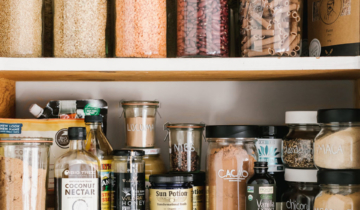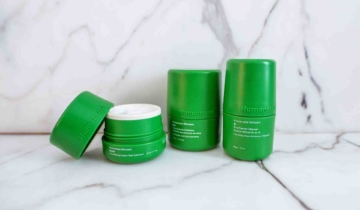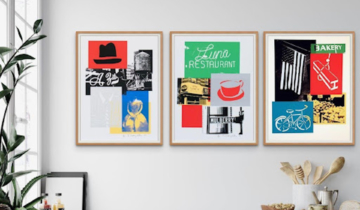Wait .. isn’t snacking “bad”?
Nope. Snacks can get a bad rap from the ultra-processed “snack foods” found in convenience stores and grocery shelves – but consuming snacks can be part of a healthy, normal diet.
For example, snacks can:
- Fulfill your protein needs, especially if you are following an exercise routine or living an active lifestyle
- Decrease cravings and ravenous hunger, resulting in more balanced meal intakes later in the day
- Increase intake of fiber, vegetables & fruits, to help stabilize blood sugar & energy levels while meeting your micronutrient targets
- Improve quality of life, by allowing yourself to eat the occasional indulgent snack with your family and friends
But … doesn’t snacking spike insulin levels, leading to weight gain?
Insulin is the hormone that helps our body utilize and store energy from food. The hormone rises in response to intake of carbohydrates (sugar) and amino acids (protein).
A big myth that surrounds insulin and weight-gain is that any rise in insulin is equivalent to a gain in fat mass, otherwise known as the carbohydrate-insulin model of obesity.
The truth is that for healthy people¹, eating normal portions of protein and carbohydrates will not drive weight-gain. Why? Because it’s physiologically impossible, as only an excess of nutrients will become transformed into fat for storage.
When consumed in normal amounts, the insulin won’t drive weight-gain, but rather:
- Stimulate muscle-protein synthesis for the protein you just consumed (a.k.a muscle gains)
- Stock muscle and liver glycogen, fuelling your muscles and preparing your body for stable blood sugar levels over the next several hours.
- Produce satiety and fullness hormones, helping you feel full and satisfied. Now that the snack fears are over, let’s get into the building of a perfect snack.
Step #1: Protein
Protein is an essential macronutrient that helps build muscle & is the building block for nearly all body functions (enzymes, hormones, nails, skin, hair).
A snack with protein helps meet your protein needs throughout the day and can also make you feel fuller & more satisfied.
Aim to have at least 5 grams of protein per snack, such as:
- 1 egg (6 grams of protein)
- 1.5 tablespoon peanut butter (5 grams of protein)
- 1/4 cup pumpkin seeds (5 grams of protein)
- 1/4 cup of hummus (5 grams of protein)
- 1/4 cup of skyr icelandic yogurt (5-7 grams of protein)
- 1/4 cup of ricotta cheese (5-7 grams of protein)
- 3/4 cup of soy milk (6 grams of protein)
Step #2: Fiber
Fiber is a type of carbohydrate that humans can’t digest. Some types of prebiotic fibres are digested by the bacteria in your gut microbiome while other fibers reduce blood sugar and cholesterol levels.
Aim to have at least 2-3 grams of fiber per snack, such as:
- 1 whole fruit (banana, apple, pear) or 1/2 cup berries (3 grams fiber)
- 1/2 cup cruciferous vegetables (kale, broccoli, cauliflower) (2-3 grams of fiber)
- 1 slice of whole-wheat bread (3 grams fiber)
- 1/4 cup of avocado (3 grams of fiber)
- 1/4 cup of homemade granola (2-3 grams of fiber)
Step #3: Fat
Healthy fats such as omega-3s are essential, and help reduce inflammation and increase HDL or “good” cholesterol. Fat is also extremely satiating, helping you feel full and satisfied.
If your protein or fiber source already contains a source of fat (avocado, nuts, seeds, whole-fat yogurt) you can skip this step. If not, add a small serving of healthy fat to each snack, such as:
- 1 tablespoon of chia seeds
- 1 tablespoon of chopped walnuts
- 2 teaspoons of extra-virgin olive oil
- 2 tablespoons of mashed avocado
Putting it all together…
Now that we have our three nutrients (protein + fiber + fat) we have the building block for a perfect snack with staying power. Try mixing and matching these together, such as:
- 1 egg with avocado on whole-wheat toast
- Banana peanut-butter smoothie with soy milk
- Yogurt parfait with berries and granola
- Sliced veggies & hummus or guacamole
- Ricotta cheese on whole-wheat toast with tomatoes & walnuts
What’s your favourite protein + fiber + fat snack? Let us know in the comments!
Article contributed by OpenSpace Clinic
Written by: Kristen Sunstrum, RD
Professional Dietitian
Kristen is a registered dietitian and member of the Ordre professionel des diététistes du Québec (OPDQ) and Dietitians of Canada. She obtained her B.Sc. in nutritional sciences from McGill University and completed various clinical internships, including specialties in gastrointestinal diseases (Irritable Bowel Syndrome, Crohns, Ulcerative Colitis), kidney disease, critical care and mental health. She has also provided nutrition counselling for general healthy eating, weight-loss and weight-gain.
Kristen’s approach to working with clients is a focus on personalized nutrition. Healthy eating goes beyond what’s on one’s plate, requiring a different approach for everyone. Her 100% virtual counselling sessions include a personalized artificial-intelligence food report, and utilizes these data-informed insights for the best nutritional care possible.
Feature image via Pinterest





 No products in the cart.
No products in the cart.